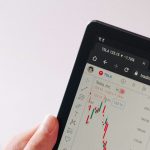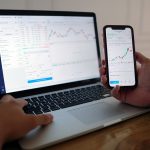What markets are available for CFDs?
Are you looking for a market to trade CFDs? We’ll discuss the different markets for CFD traders, whether you’re interested in trading Forex, commodities, or indices.
What are CFDs, and why are they becoming increasingly popular among traders and investors?
A CFD, or contract for difference, is a type of financial instrument that allows two parties to enter into a contract where the buyer pays the seller the difference between an underlying asset’s opening and closing price. This underlying asset can be anything from a currency pair to a commodity, index, or cryptocurrency.
The main reason CFDs are becoming so popular is that they offer traders and investors the ability to speculate on the price movement of an underlying asset without actually owning it. It means that you can take a long or short position and make profits (or losses) regardless of which way the market moves.
Another benefit of trading CFDs is that you can use leverage. It can allow you to trade with more money than you have in your account, potentially leading to more significant profits (or losses). However, it is essential to note that leverage can also increase your risk.
So, now that you know what CFDs are and why they’re becoming so popular.
What markets are available for CFD trading, and what are the benefits of each market type?
Forex
The foreign exchange market, or Forex, is the world’s largest and most liquid market. It makes it an excellent market for CFD traders as there is always somebody to take the other side of your trade. The Forex market is active 24 hours a day, five days a week, so you can trade whenever you want.
Commodities
Commodities are another famous market for CFD traders. These are physical goods that are used in the production of other goods or services. Some examples of commodities include oil, gas, gold, and silver. Commodities are traded on global exchanges and are often used as a hedge against inflation.
Indices
An index is a group of stocks combined to give an overall market picture. Some examples of indices include the Dow Jones Industrial Average (DJIA), S&P 500, and NASDAQ. Indices are a great way to expose the stock market without picking individual stocks.
Cryptocurrencies
Cryptocurrencies have exploded in popularity over the past few years and are now one of the most popular markets for CFD trading. Bitcoin, Ethereum, Litecoin, and Ripple are just some of the many cryptocurrencies you can trade as a CFD.
So, there you have it. These are just some of the different markets that are available for CFD trading. Each market has its benefits and drawbacks, so it’s essential to do your research before deciding which one is right for you.
How do you decide which market to trade in, and what factors should you consider when making your decision?
When deciding which market to trade in, there are a few factors that you should consider. These include:
The type of asset you want to trade- As we’ve seen, there are many different types of assets that you can trade as a CFD. It would help to decide which asset class you’re interested in before you begin trading.
The time frame you want to trade in- The Forex market is open 24 hours a day, five days a week. However, not all markets are open all the time.
Your risk tolerance- Trading is inherently risky. Some markets are more volatile than others, which can be riskier. It would help if you considered your risk tolerance before you begin trading.
Your investment goals- What are you hoping to achieve by trading CFDs? Are you looking to make a fast profit, or are you aiming for long-term gains? Your investment goals will influence which market your trade-in.
Once you’ve considered these factors, you should know which market is right for you. Remember, doing your research before making any investment decisions is essential.













